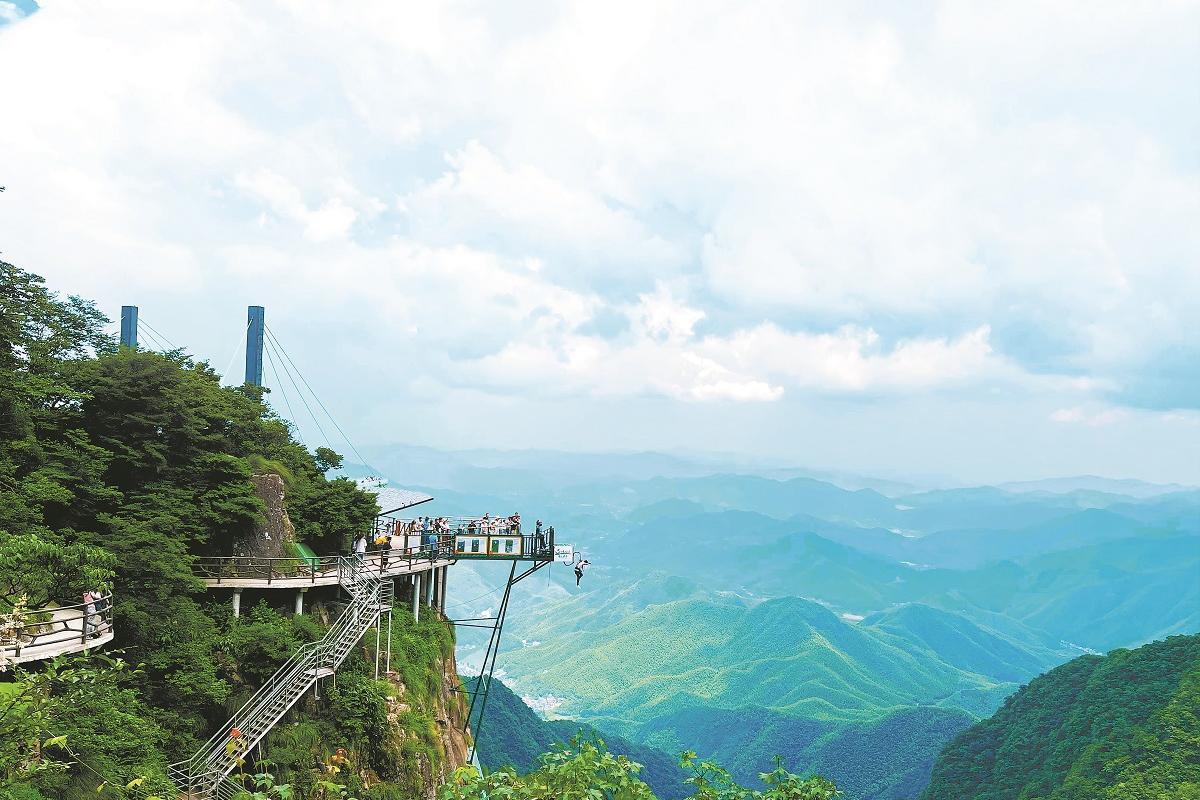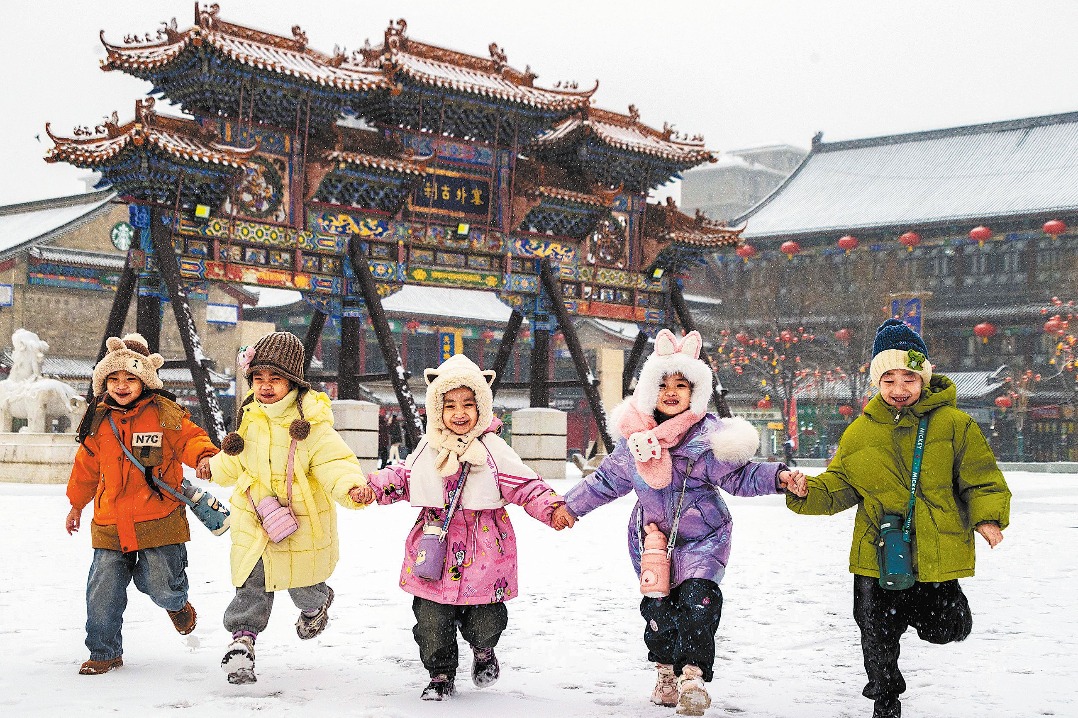Mountaintop of ancient wisdom

| The statue of Confucius dwarfs tourists at Guiyang Confucius Academy. Philip Etyang / For China Daily |
| The Dacheng Temple building at the North of the Etiquette Square. It is the main building of the academy. |
Academy's new complex in southwestern China helps keep alive the teachings of confucius thousands of years after his death
Atop 73 iconic steps at the entrance of Guiyang Confucius Academy in China's relatively remote Guizhou province stands a statue of giant proportions.
With hands clasped, a long flowing beard, and adorned with a symbolic gown, a towering likeness of the great Chinese sage, philosopher and politician, Confucius, stands imposingly at the Lingxing Gate of the academy, which is just a few years old.
Confucius died more than 2,500 years ago but his teachings and philosophy still live on and have been passed down by this and other institutions.
"As you noticed, you had to climb 73 steps to get to the top of the academy. Each step symbolizes a year in the life of Confucius," my guide says.
The academy covers about 30 hectares in the mountains, with Dajing Mountain to the east and the Huaxi River to the west.
"Construction of the academy was only completed in September 2012 and therefore most of the buildings are still fairly new," the guide says.
The Guiyang facility is a new branch of the Confucius Academy, a nonprofit institute that provides classic Chinese literature and culture training to people at home and abroad, and also publishes Confucius Academy, a bimonthly Chinese-English bilingual literature and culture review magazine.

The establishment is divided into two main areas: the Public Education Area, which occupies some 8.5 hectares, and the International Institute for Chinese Culture, which occupies the remainder and is a base for research on traditional Chinese cultures for scholars. Exhibits of ancient artifacts as well as training lectures and sacrificial ceremonies are held in the Public Education Area.
Thirteen presidents of universities across the world held a round-table forum at Guiyang last year and later visited the Guiyang Confucius Academy. Among them were the vice-chancellor of the University of Nairobi, Professor George Magoha, and his deputy vice-chancellor, Student Affairs Professor Isaac Mbeche.
Academic interest in China's language and culture has been greatly expanded by the Chinese government's Beijing-based Confucius Institute - not to be confused with the academy - with branches around the world based primarily at schools and colleges. There are now 39 Confucius Institutes in Africa.
At the academy, right behind Confucius' statue is a small gate known as the Dacheng Gate, the second ceremonial gate to the academy. It leads to a large open area called Etiquette Square. It is where traditional ceremonies of Chinese etiquette are held and one of the areas most heavily used by the public.
"The academy uses three significant ceremonies in local culture to exhibit and teach Chinese etiquette: the school-admittance ceremony, coming-of-age ceremony and wedding ceremony," the guide says.
The school-admittance ceremony is held to enlighten children on proper rules of engagement while at school. The coming-of-age ceremony is held to teach young adults the importance of gratitude, filial piety and responsibility. The wedding ceremony instructs couples on the importance of marriage and family.
The square has a capacity of 5,000 people. It also has significant artifacts at its four corners, the most dominant being a large bronze bell known as the "sound of metal". Others include one round and one square cauldron known as the Heavenly Curtain and the Earthen Holder, respectively.
I marveled the most at Dacheng Hall, to the north of the square. The temple is the main building of the academy and was designed in the traditional Han architectural style. The temple is divided into two by a glass wall that the guide says represents the connection between heaven and earth. The temple is 3,428 square meters in size and has seven open rooms.
Next I visited the Kuiwen Pagoda, the academy's highest building at four stories. Each floor has an overhanging gable roof, and the pagoda houses a tearoom, calligraphy room and a library.
Finally, I toured the Research and Study Area in the International Institute for Chinese Culture section at the center of the complex. Experts, professors and PhD candidates from various universities convene to conduct their research for free.
They live on the eastern side of the complex. The section has a research and study hotel, an international youth hostel, professor guesthouses and a PhD apartment building. The area can accommodate up to 300 experts, scholars and students.
The author is a journalist at the Standard Group in Kenya.
(China Daily Africa Weekly 08/29/2014 page26)
Today's Top News
- Death toll rises to 16 in Sydney's Bondi Beach shooting
- Firm stance on opening-up wins praise
- Evidence mounts of Japan's wartime atrocities
- Gunmen kill 11, wound many on Sydney beach
- Study finds Earth's deep water reservoirs
- China remembers victims of Nanjing Massacre 88 years on































